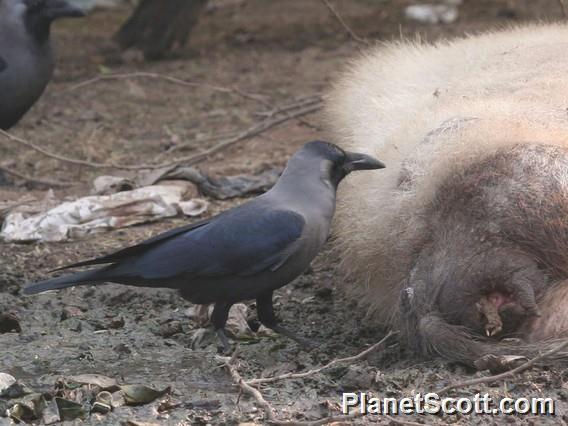House Crow (Corvus splendens)

House Crow (Corvus splendens)
×


House Crow (Corvus splendens)
About House Crow (Corvus splendens)
- Kingdom: Animals
- Phylum: Chordates
- Class: Birds
- Order: Perching Birds
- Family: Jays and Crows
The house crow, also known as the Indian, greynecked, Ceylon or Colombo crow, is a common bird of the crow family that is of Asian origin but now found in many parts of the world, where they arrived assisted by shipping. It is between the jackdaw and the carrion crow in size but is slimmer than either. The forehead, crown, throat and upper breast are a richly glossed black, whilst the neck and breast are a lighter grey-brown in colour. The wings, tail and legs are black. There are regional variations in the thickness of the bill and the depth of colour in areas of the plumage.
Source: Wikipedia
Trips
Visits
-
-
2005-12-31
Delhi - Tughlaqabad, India -
2006-01-09
Kheoladeo National Park, India -
2011-01-01
Cairo, Egypt -
2013-02-13
Kolkata, India -
2013-02-23
Thattekad Bird Sanctuary, India -
2013-02-24
Sanjay Ghandi National Park, India -
2013-02-25
Mumbai, India -
-
-
-
-
-
-
-
-
-
-
-
-
-
-
-
-
-
-
-
-
-
-
-



